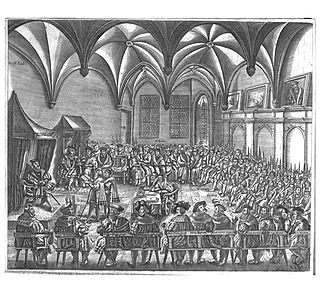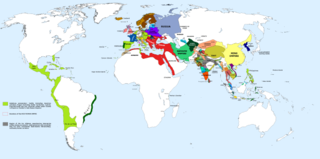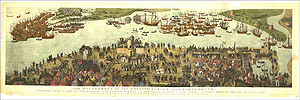The 1540s decade ran from 1 January 1540, to 31 December 1549.

Year 1554 (MDLIV) was a common year starting on Monday of the Julian calendar.
The 1460s decade ran from January 1, 1460, to December 31, 1469.

Year 1571 (MDLXXI) was a common year starting on Monday of the Julian calendar.
The 1450s decade ran from January 1, 1450, to December 31, 1459.

Year 1540 (MDXL) was a leap year starting on Thursday of the Julian calendar.

Year 1506 (MDVI) was a common year starting on Thursday of the Julian calendar.

Year 1555 (MDLV) was a common year starting on Tuesday of the Julian calendar.

The 1550s decade ran from January 1, 1550, to December 31, 1559.
The 1390s was a decade of the Julian Calendar which began on January 1, 1390, and ended on December 31, 1399.

1578 (MDLXXVIII) was a common year starting on Wednesday in the Julian calendar.

Year 1567 (MDLXVII) was a common year starting on Wednesday of the Julian calendar.

Year 1558 (MDLVIII) was a common year starting on Saturday of the Julian calendar.

Year 1559 (MDLIX) was a common year starting on Sunday of the Julian calendar.

Year 1539 (MDXXXIX) was a common year starting on Wednesday of the Julian calendar.

Year 1515 (MDXV) was a common year starting on Monday of the Julian calendar.
Year 1395 (MCCCXCV) was a common year starting on Friday of the Julian calendar, the 1395th year of the Common Era (CE) and Anno Domini (AD) designations, the 395th year of the 2nd millennium, the 95th year of the 14th century, and the 6th year of the 1390s decade.
A queen consort is the wife of a reigning king, and usually shares her spouse's social rank and status. She holds the feminine equivalent of the king's monarchical titles and may be crowned and anointed, but historically she does not formally share the king's political and military powers, unless on occasion acting as regent.
A prince consort is the husband of a monarch who is not a monarch in his own right. In recognition of his status, a prince consort may be given a formal title, such as prince. Most monarchies do not allow the husband of a queen regnant to be titled as a king because it is perceived as a higher title than queen, however, some monarchies use the title of king consort for the role.
A queen mother is a former queen, often a queen dowager, who is the mother of the reigning monarch. The term has been used in English since the early 1560s. It arises in hereditary monarchies in Europe and is also used to describe a number of similar yet distinct monarchical concepts in non-European cultures around the world. The rank does not go to all mothers of monarchs though. A mother of a ruling monarch may only be referred to as queen mother if she was a queen consort as opposed to a princess consort.
















